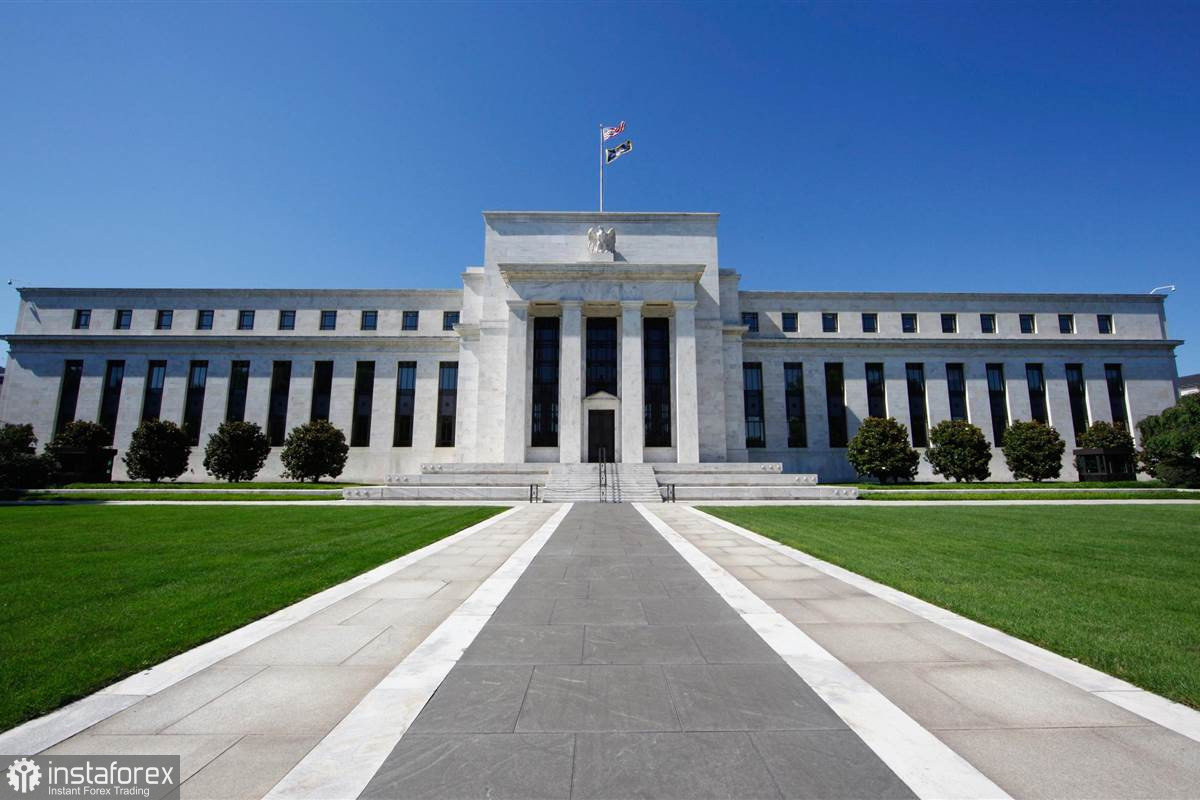
The key indices of the US stock market – Dow Jones, NASDAQ, and S&P 500 – ended Wednesday with a minimal decline. In fact, as such, there was no fall. At least now, it is impossible to say that the growth in the US stock market is complete. The Fed's minutes, published last night, did not provoke a serious market reaction. However, this is not surprising since all the necessary information is usually conveyed to the markets immediately after the Fed meeting. Therefore, the Fed protocol, or "FOMC minutes," is a pure formality. So, what did the protocol say this time?
The first thing to note is that most monetary committee members support a further increase in the key rate. As we said earlier, one slowdown in inflation is nothing, and it certainly does not indicate a downward trend in this indicator. Fed members believe that the rate will have to be raised to a "restrictive level" in any case. And the restrictive level is the level at which the economy "cools down." Currently, the rate level has reached a "neutral level," but not all FOMC representatives think so. Hence the conclusion: the rate is not even at a level that would pressure the economy. Nevertheless, the American economy is already slowing down, as evidenced by the last two GDP reports.
Further, the monetary committee members admitted that the pace of rate increases would have to slow down in the future. Still, there is no revelation in this either because it is already clear to everyone that the rate will not grow forever by 0.75%. The period of high inflation may be prolonged, and the unemployment rate may begin to rise. These two points require comments. Recall that in recent weeks, Jerome Powell has repeatedly repeated that there is no recession in the US economy and that it can be avoided in the future. The labor market is very strong at this stage, and the unemployment rate is at its lowest in 50 years. However, a further rate hike will inevitably lead to more pressure on the economy, and the Fed is already waiting for an increase in unemployment quite openly. What does this mean? Those macroeconomic indicators will deteriorate. And the longer inflation remains at high levels, the more it will have to raise the key rate, creating pressure on the economy. For stock indices and stocks, this is still bad news. Despite the growth in recent weeks, many experts advise investors not to rush into buying shares of American companies, expecting a new powerful collapse. The rate can grow by another 1–1.5% quite easily. If the next inflation report does not show a serious slowdown, the rate may rise by another 0.75% at the September meeting. All this continues to worsen investment conditions in the United States, increasing the demand for the safest assets.





















